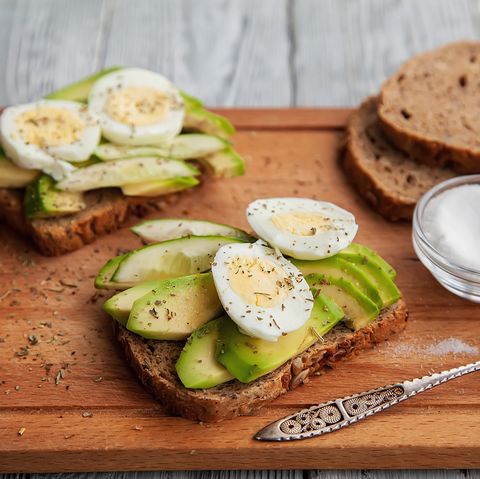

You’ve probably heard all about the ketogenic diet by now, where carbs are limited to roughly 50 grams a day, and fats make up about 80% of your daily’s worth of calories. Yet the keto diet can be too restrictive on the carb count for some, and that’s where a variation of the diet might come in handy.
The targeted keto diet allows for a little wiggle room, where you can eat extra carbs around your workouts. It’s a great move for those who find traditional keto to be too challenging or not helpful for their goals.
How does the targeted keto diet work?
“Targeted Ketogenic Diet, or TKD, is a way to transition to incorporating more carbohydrates in your diet after you have been in strict ketosis for a while. It is important to know that you should be strict keto for at least 60 days before transitioning to TKD because your body needs to become fat adapted first,” says Drew Manning, keto and fitness expert and author of The Complete Keto.
By going on it after you’ve been on regimented keto, your body knows how to use glucose quickly but still produce ketones, which allows you to maintain a level of ketosis, he explains. As you’re adding in carbs relative to workouts, you’ll eat about 20 grams of carbs an hour before a workout and immediately following a workout, he says.
“The idea here is that you may protect the body from burning its own muscle for fuel because you have enough glucose floating around in the blood stream for your body to use as energy and yet still stay in ketosis after the workout,” explains Ginger Hultin, MS, RDN, CSO, Spokesperson for the Academy of Nutrition and Dietetics.
Because you’re consuming those added carbs to boost your performance and repair muscle damage, you might be able to build more muscle, she says.
Still, the type of carbs do matter, so don’t grab a donut for a pre-workout snack and finish off with a slice of pizza. “I recommend eating healthier sources of carbs like potatoes, sweet potatoes, fruit, or even some rice. Remember, even though you are incorporating carbs the quality of the food does play a part in your overall health,” says Manning.
“Having carbs from sugary cereals, bread, or treats can cause you to be kicked out of ketosis or cause digestion distress after being strict keto for so long,” he adds.

Getty ImagesHausOnThePrairie
Should you try targeted keto?
“To understand if this is right for you, definitely meet with a physician, dietitian and trainer who can help target the diet for your unique needs as an athlete,” says Hultin. If you need to be on the keto diet for health reasons, it’s best to stick with the classic. “If you are on a prescribed, medical ketogenic diet, this might not be appropriate for you as there’s a chance it could move your body out of ketosis,” she advises.
If you are an athlete who could benefit, it might be worthwhile, Manning says. “Following TKD can be a great way to get your body accustomed to using dual fuel sources, both glucose and ketones. This way you have more energy for your workouts, especially if you are an endurance athlete.”
It can be very effective for endurance athletes, weight trainers, and CrossFit athletes in giving them more energy for their long and intense workouts.
“Anyone who may be wanting to transition to eating more carbs can benefit from TKD, just be sure to test your blood ketones to see if it is right for you and your body,” Manning says. If you aren’t in ketosis enough on it, it may be less effective for you.
Source: Read Full Article